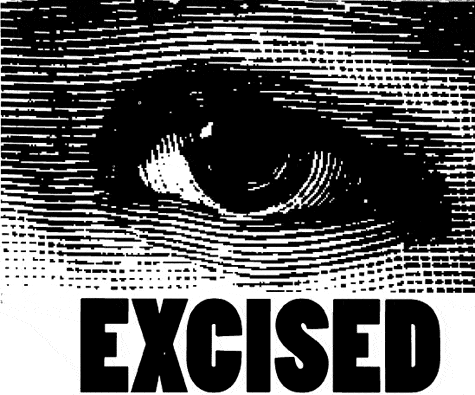by Lois Greene Stone
How does this remark grab you? “Myomectomy is the operation of choice when it is necessary to save the uterus for reproduction, or for sentiment.” (Textbook of Surgery, 6th Edition, 1956)
Okay, men can’t really understand why some women are reluctant to have a hysterectomy, but why make female feelings seem irrational?

Occasionally, when I was younger, I’d been content to play “Me Tarzan, You Jane,” but the feminist movement, coupled with my own aging process, has given me freedom at least to have a swing on Tarzan’s rope. Though I lost the war, I did put up some pretty good battles.
In 1943, when I was nine, a booklet called Growing Up and Liking It instructed me to not get chilled, wash hair or walk in the rain during my menstrual period. My mother prepared me for its onset with positive philosophy and wonder about my body eventually housing a human.
In 1945, secondary ovarian failure that became a 34-year problem was treated (by male physicians) with pats on the head. Iron-deficiency anemia from prolonged periods was met with pills. In high school, the swim teacher wouldn’t believe anyone could “normally” bleed for more than 10 days at a time, so a sympathetic physician had me drop swimming to spare me humiliation; at least 10 days, for me, was normal.
Allergic to my own progesterone, I monthly vomited, sweated, bled. My mother, however, did such a superb job with my attitude about being female, I accepted, coped, and didn’t give in to the disability of twisting cramps or excessive blood flow.
In college, tampons represented freedom to swim, and certainly more comfort during classes when combined with a protective pad. Painful cramps were endured.
“When you get married your periods will be within average normal limits,” a patronizing internist stated. He thought my cramps and irritability were products of my active mind. Later, I heard “when you have children,” then, “when you’re older.” Even my husband, a medical student when we married in 1956, was taught dysmenorrhea was mental and some menstrual problems a product of penis envy.
Three planned times, with temperature chart and drugs, my uterus swelled with life. Again, grateful to my mother, I went through many physiological problems but was emotionally high. Giving birth without anesthesia, unusual in 1959, was an incredible act my aware body performed. Every cycle was worth the excitement and privilege to bear down and see an infant’s head in a mirror while most of its body was still housed inside me. The transition between fetus and baby, done with an explosive push, showed the sex of my child. Why, this pain was productive!
I had an endometrial biopsy, also a D&C to shock my body to cease prolonged bleeding and secretly continued to smile at the wonder of being female. I also refused advice for surgical removal of my uterus.
Endometriosis planted itself in my uterus, and for 14 years I’d been stubborn as I heard “What do you need it for? You aren’t having any more children.” But the choice was still mine, I quietly considered; I MAY not have any more, but I CAN….
An operation threatened as, when prone, my growing-with-fibroids uterus collapsed my bladder. My husband asked if I’d feel less like a woman, and was this a reason to reject surgery. He, too, couldn’t comprehend why I wanted to hold on to my uterus. What a mixed message men give, depending upon a woman’s age!
Why did I want to keep it within me? I was nearly finished with my predestined cycle and, oddly enough, the bleeding was more regular than ever. If I could just make five more years, I questioned, might it shrink? We’d been dealing with one another since 1945. It had given biologic immortality to generations that preceded me. It withstood a placenta hole once, and a possible placenta praevia another time, action from pitocin, yet still housed-nourished-issued-by-contraction three humans who see, hear, think, feel, smell, taste. What did I want it for? It was a friend, not a curse. It gave me an edge: I may not command salary for service a man gets, but/’ye given birth. Some men must feel threatened by this, though none would ever admit it.
Sentiment? Maybe. Its action governed 35 years of my life, 35 years of circles on calendars savoring the few comfortable days a month and accepting still the rest. There was a harmony, an order, a routine, that began with a body message I’d hoped would end same way.
Why hold onto it? Did I really need to give a reason? It took over a year to adjust to the emptiness after the inevitable surgery. Now, almost 12 years later and with three grandchildren, I touch the slender scar and remember the cynical surgeon’s words “get rid of it; it was just a baby carriage.”
Just?
Lois Greene Stone has been a freelance writer I poet for over 30 years.
